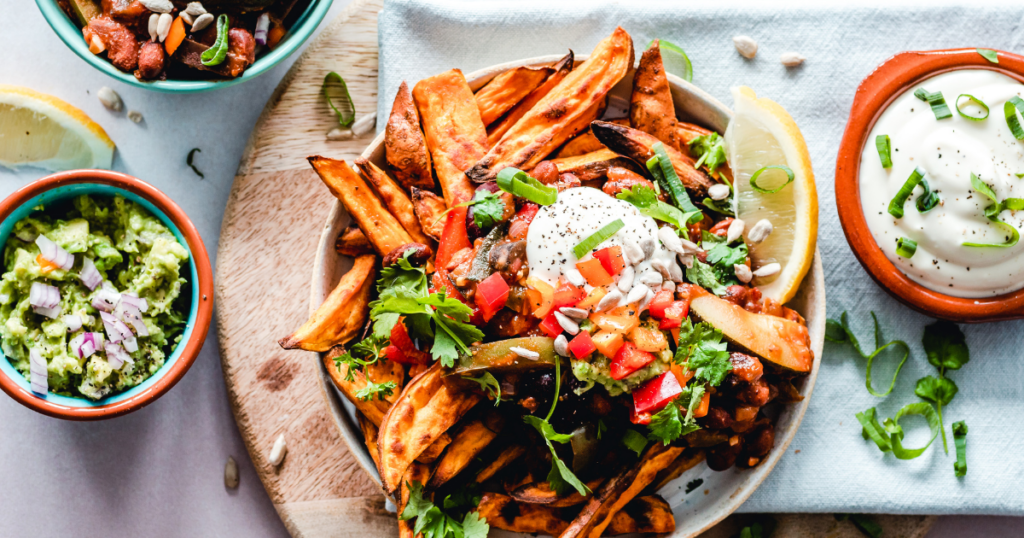Have you ever thought about the different types of hunger?
Hunger, we all know the feeling. The rumbling in your stomach, the increasing thoughts about food, low energy, maybe even difficulty focusing. These are all tell tale signs that your body is asking for nourishment and signs that you can likely recognize pretty easily.
Something you may not know is that there are different types of hunger beyond just the physical sensations, and when eating intuitively, all types of hunger deserve to be honored.
In today’s article, we will be diving into the differences between specific types of hunger in intuitive eating and what they may look like for you.
Are you thinking to yourself… “I need to find an intuitive eating dietitian near me!”. Well, you’re in the right place. We offer weight-inclusive nutrition therapy that is done completely virtual. Head to our services page to learn more about our current offers!
Hunger and Intuitive Eating: The Connection
If you only ate when you were hungry there would likely be many points in the day where you missed out on satisfaction, enjoyment, and necessary energy.
Intuitive eating is more than just eating when you’re hungry and stopping when you are full. It is a way to get back in tune with how to support your body, honor its needs and wants, and reduce obsessive thoughts about food and body.
If the sole focus of intuitive eating was to work on eating when you’re hungry and stopping when you’re full there would be so many pieces to the puzzle left unaddressed and out of place.
An important thing to note before diving into the different types of hunger is that while food is used as fuel and for energy, it offers much more than that. Food is connection, food is celebration, food is culturally significant.
Focusing only on the energy content of food (ie. any diet encouraging you to fixate on calories or points!) disconnects you from the other, equally important, aspects of what you’re eating. Now, let’s dive in.
What are the Different Types of Hunger?

It is essential to be able to differentiate between the different types of hunger to help you fall more in tune with your body and how you’re feeling throughout the day. Use this comprehensive guide below to learn what your body could be telling you.
Physical hunger:
This one we referenced earlier. Physical hunger encompasses the classic signs of hunger, like a growling stomach, thoughts about food, and difficulty concentrating. Your body is likely sending clear physical signals that it is ready for nourishment.
Although ideally, you never want to get to the point of feeling ravenous, some more extreme signs of hunger could be shakiness, dizziness, fatigue, and even weakness.
Practical hunger:
You lead a busy life and although it would be nice to be able to enjoy a satisfying meal at a leisurely pace whenever hunger arises, life simply doesn’t work like that. This is where practical hunger comes into play.
Practical hunger isn’t necessarily hunger in the literal sense but rather a preparation for anticipated hunger you may not be able to satisfy later.
Here are some examples of when practical hunger may present itself:
- When you have an appointment over your lunch break and eat before to avoid getting too hungry (or hangry) later on.
- Having a snack before an event because you’re not sure if food will be provided.
- Having a meal before a plane ride/road trip where food is less accessible.
- Having a bigger breakfast or early lunch before back to back meetings at work.
These are just a few of many scenarios that may result in a need to respond to practical hunger. It can seem strange to eat when physical hunger cues are not present, but planning for anticipated hunger is an incredible way to care for and support your body.
Taste Hunger:
This is a fun one. Taste hunger is pretty simple, it is when you may not be feeling physically hungry but a specific food or flavor just sounds good!
A great example of this is finishing a varied, satisfying meal and then noticing a craving for something sweet. You may be physically full and still feel the urge to check the dessert menu at a restaurant or peek into the pantry to satisfy your craving. And guess what? That is completely okay!
Whether you are hungry or not you are allowed to have food just because it sounds good and you want to. Let me repeat that again for good measure: Whether you are hungry or not you are allowed to have food just because it sounds good and you want to.

Emotional hunger:
Do you eat when you’re stressed, down, or lonely? If the answer is yes, you might be familiar with emotional hunger or its other moniker: emotional eating.
It can be difficult to distinguish emotional hunger from physical hunger, and this is where some curiosity can be helpful. If it has been a short amount of time since you last ate and the desire for food accompanies an intense emotion, you may be experiencing emotional hunger.
Emotional eating is not a bad thing. Like any self-soothing technique, it can be one of many tools to keep in your toolbox when you’re feeling low. When you feel the urge to eat in response to an intense emotion, it may be helpful to utilize the Pause-Process-Postpone strategy.
The Pause-Process-Postpone strategy can look like this:
- Pause. Take a moment to breathe and recognize that you do not need to make an immediate decision on how to respond to your feelings.
- Process. This is where curiosity becomes helpful. Ask yourself “What do I need right now?”. Allow yourself the space to determine if you’re experiencing physical hunger. Or if you might just be responding to a different emotional need.
- Postpone. Give yourself some time to do another activity that can support what you’re needing at the moment. Perhaps something like rest, a therapeutic cry, talking to a loved one, or journaling could provide the comfort you’re seeking. If after a few minutes you still want to eat, by all means eat! You have unconditional permission to eat whatever and whenever you want. Postponing is not to encourage you to not give into an impulse, it is just allowing you the space and curiosity to determine how to best care for yourself.
Are you looking for more dietitian-approved content? Check out our article on the basics of a bloated stomach next!
Different Types of Hunger: The Takeaway
All of the different types of hunger are valid reasons to eat, and you deserve to live a life that is both in touch with what your body needs/wants and free to honor what it is asking for.
Looking for more support from the Wholesome Chick Nutrition team? Check out our Signature 1:1 Intuitive Eating Program or our Nourished Body Basics Self-Paced Course!
These are both fantastic ways to get support from one of our amazing food freedom dietitians. There is no better time to invest in you and your health!
Written by Emily Adkisson, RDN

[…] the ice cream example from above it could be a taste specific hunger (more info on that in this blog post) or it could be the fact that your body needs and wants a little something extra to reach mental […]